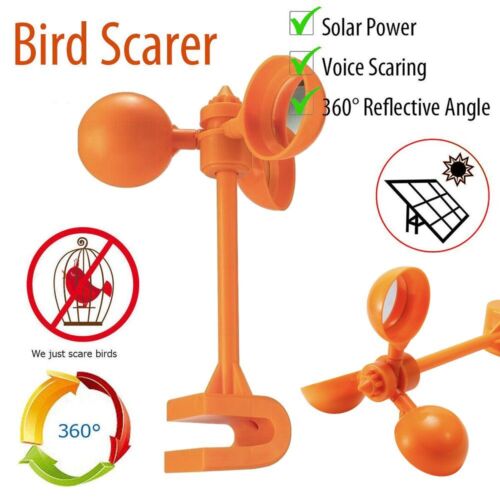Last blog I wrote about Pesky Birds. There are legitimate situations where birds need to be chased away or eliminated and lots of methods for doing so. What I mean by legitimate are situations like birds destroying crops, posing a health hazard, or interfering with air traffic. I don’t consider birds pecking at your window, eating your potted plants, or nesting above your door serious reasons.
If birds need to be controlled, there are lots of possibilities for doing so, the most common of which seem to be items that purport to scare birds because they resemble predators such as owls and snakes. These typically don’t work simply because birds get used to them and learn that they are not a threat. I was once called by Real Simple Magazine and asked to comment on fake owls and the like. I responded that an Elvis doll would be just as helpful. I then got an email from a seller of plastic owls who offered to send me two of them to try out. I put them in my garden; after two weeks a Black Phoebe used one of the owls as a perch. The sparrows ignored them.
There are lots of effective and semi-effective ways to control truly bothersome birds but you need to have a federal and/or state permit to harass birds in any way.

Netting can keep birds from roof rafters, windows, and façades. There are tracks that can be laid across ledges that give birds shocks if they walk or land on them. There are bird spikes and coils of various configurations, quite common in Europe. The “daddy-long-legs” is a plastic spindle with stainless steel rods that rotate in the breeze. There are sonic bird repellents that emit supposedly irritating sounds and ones that match the alarm calls of certain birds, like gulls. And there are bird chemicals, liquid and gel, for use on farmland, fields, roofs, etc. One of the tools used to chase birds off rice fields is a propane sound cannon. They simply make loud sounds on a regular basis – every five minutes or so.
There is the “holographic bird gel that uses a combination of sight, sense and smell that repels birds.” There is also a laser light that moves around, scaring birds from their roosts. Their advertisement claims that “birds’ most developed sense is sight and they perceive laser lights on the green spectrum like physical objects.” And the birds fly off. I’m not sure, could be.
No question that some species of birds are pests, either annoying, hazardous, or economically destructive. Unfortunately they have to be controlled. Hopefully the control can be done in a humane way.
But if your problem is simply a local one – woodpeckers pecking your siding, robins attacking your window, or grackles hanging around your pool, you can probably solve it very easily. The most effective bird scarer is one or more shiny CDs or mylar tape hanging in the breeze. I’m sure there is some music you have outgrown, so hang it up.
- Economic View of Birdwatching
- The Twelve-wired Bird-of-Paradise
- The Naming Controversy
- The Snakebird
- Bird Names Changing?
A little off topic, but although there are certain birds labeled as pests. I don’t think they are.
Most do a great service, generally, or have a valuable place in the eco system.
My question is about gulls. I should look up the scientific name although I realize there are many sub species.
Why do people in the media and the ” average joe on the street” call them “sea gulls”. ? ?
Is it Jonathan Livingston’s fault?
I know you have a good sense of humor and I think we need humor to get through these days, but I really have that question. Do you have an answer..?
That being said I really enjoy these posts you share with us, Dr.Roger! I want to go to Amazon and pick up one of your books. Label that a new years resolution.
I dont want to be gull-ible, so I wanted to ask you about these water birds. Many thanks with a grateful chuckle.
Alice a reader .
There are 54 different species of gulls. Not subspecies, species.
Some people call them seagulls because many of them inhabit the shores of oceans. Jonathan Livingston perpetuated the term.
Hope you will read one of my books and tel me what you think.
Did I miss your pro or con assessment of the “Bird Scarer” shown in your post?
And do hanging CDS really work?
Thanks
I don’t think I gave a pro or con assessment of bird scarer. According to the Cornell Lab of Ornithology, hanging CDs are very effective.
We frequently have Northern Flickers nest in our attic during spring. The male can be very annoying while drumming on our chimney flashing. So, in order to scare the birds off, I stuck a huge eye on an extended mop and hoisted it facing the nest several times during the day. It worked! The birds thought they were being stared at and left.